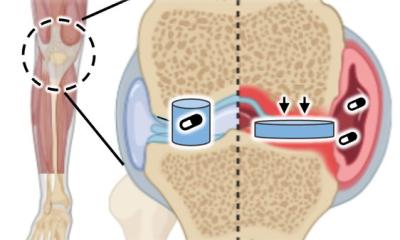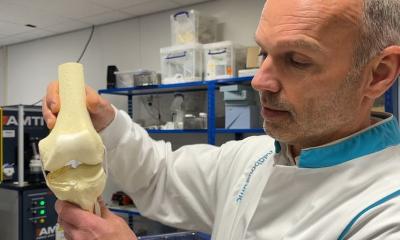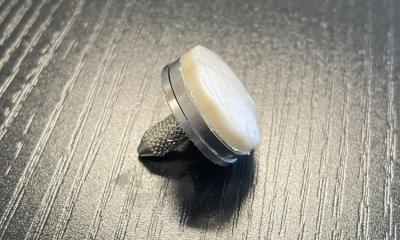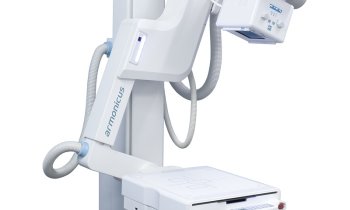
Image source: Adobe Stock/Graphicroyalty
News • Chronic inflammatory disease
"Frozen shoulder" holds key to understanding fibrosis resolution
New insights open up potential new targets for treatment and reducing the need for surgery.
Frozen shoulder is a painful and disabling condition affecting the ligaments that form the shoulder joint capsule. Patients experience severe stiffening of their affected shoulder which can last for several years, interfering with activities of daily life. Frozen shoulder is a unique musculoskeletal disease as it unusually resolves spontaneously over time. This distinguishes the condition from most fibrotic (scarring) diseases that are progressive and irreversible, for example knee arthrofibrosis affecting the ligaments comprising the knee capsule after joint replacement.
Writing in Nature Communications, senior author Professor Stephanie Dakin, Versus Arthritis Career Development Fellow, and the team at the Nuffield Department of Orthopaedics, Rheumatology and Musculoskeletal Sciences (NDORMS) studied tissues collected from frozen shoulder patients undergoing surgery to improve their shoulder mobility. Stephanie explained: ‘We purposefully studied tissues from patients with advanced-stage frozen shoulder to understand how the condition ultimately resolves. Using cutting-edge technologies, we identified that the shoulder capsule is predominantly comprised of fibroblasts (the major cell types that form ligaments) and macrophages, a type of immune cell. We discovered that distinct populations of macrophages in the shoulder capsule are enriched to resolve inflammation. We performed experiments using patient-derived cells, revealing that crosstalk between these resolving macrophages and fibroblasts reduced inflammation and promoted tissue remodelling, providing us with cellular evidence of how frozen shoulder resolves.’
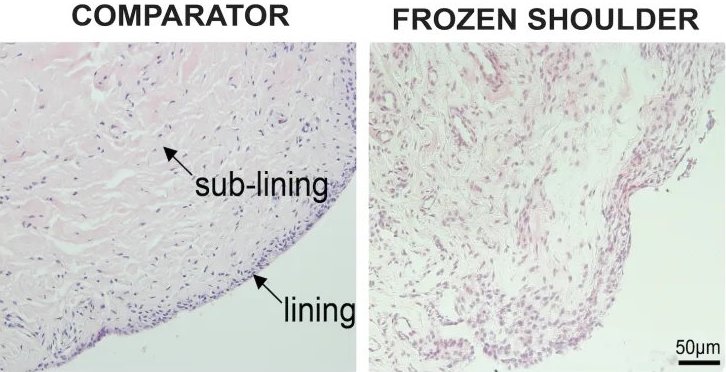
Image source: Ng MTH et al., Nature Communications 2024 (CC BY 4.0)
Stephanie added: ‘We next compared the resolving macrophages identified in the shoulder capsule with the same cell population found in synovial tissues from rheumatoid arthritis patients who were in disease remission. This analysis supported the initial findings that resolving macrophages brought about resolution of inflammation in synovial tissues and resolution of fibrosis in the shoulder capsule. Finally, we analysed foetal shoulder tissues, identifying resolving macrophage and fibroblast populations comparable to those in frozen shoulder. This suggests that the template to resolve fibrosis is established during shoulder development’.
Collectively, this study identifies that targeting crosstalk between resolving cell types in the shoulder capsule could accelerate resolution of frozen shoulder, addressing an unmet clinical requirement for patients and reducing the need for surgery. Importantly, this work also provides a basis for potential therapeutic resolution of persistent fibrotic diseases beyond the shoulder joint.
This project received funding from Versus Arthritis, UKRI (MRC), The Wellcome Trust, Dunhill Medical Trust, Human Immune Discovery Initiative, and the NIHR Biomedical Research Centre (Oxford).
Source: Nuffield Department of Orthopaedics, Rheumatology and Musculoskeletal Sciences at the University of Oxford
22.02.2024



